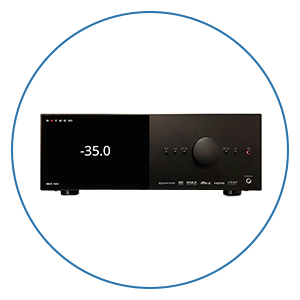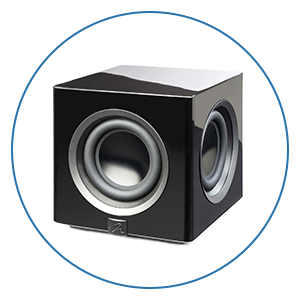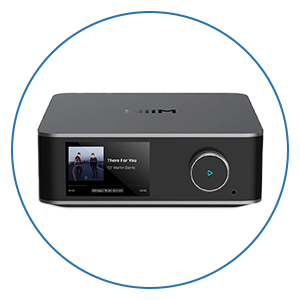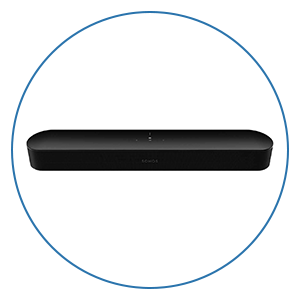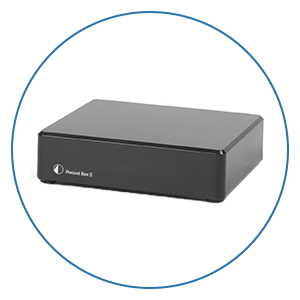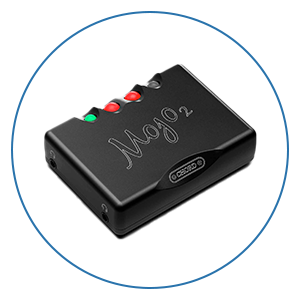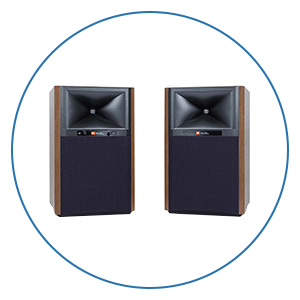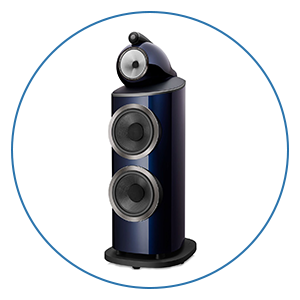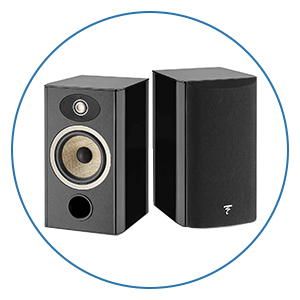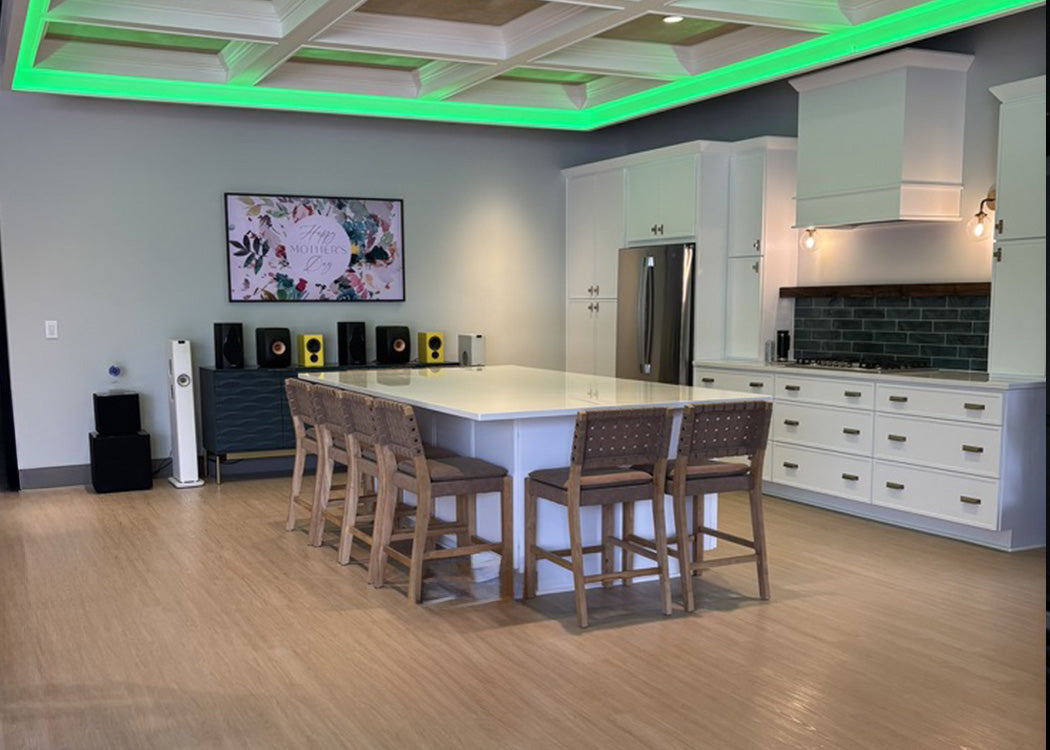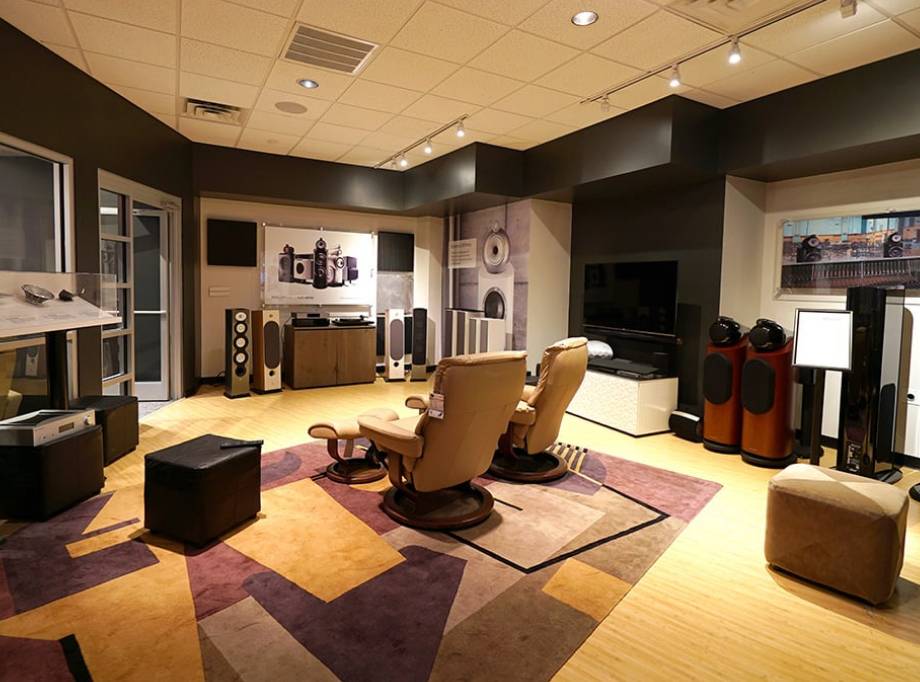A Guide To Home Theater Acoustics

In this article, you will learn one of the most important aspects of a great home theater. While many people focus first on the size of the screen, the surround sound system, the theater seating, or the popcorn machine, they overlook one of the parts that can make a huge difference in the ultimate sound in the room: the home theater acoustics.
We will go over the basic concepts anyone with a home theater or media room can take to improve the performance of their system. This is not a deep dive into how to create an acoustically perfect home theater. These are tips on how to do some simple and inexpensive things that will usually have a dramatic effect on bettering your sound and enjoyment.
For those of you who do want to take it to the next level, Audio Advice does offer home theater design services. Please reach out to our team of home theater experts if you are interested.
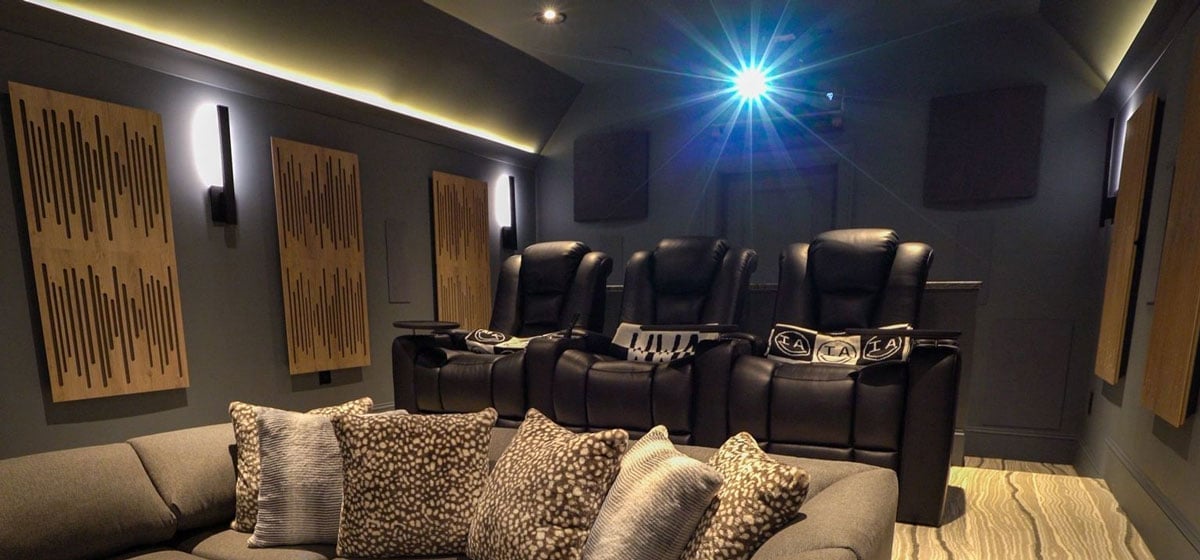
Why Room Acoustics Matters
Let’s take a step away from home theater for a minute and talk about something that more people have experience with — a kitchen remodel. You may be inclined to think about the appliances and their features, the color of the cabinets, or the granite countertops. You’re thinking about it as if it were a picture in a magazine.
While the aesthetic is certainly important, the fact of the matter is that people tend to spend more time in the kitchen than anywhere else in the home. While the design is fun, the function is at least equally important. What looks good and what works well aren’t always the same thing. Of course, finding a balance is ideal, but if you have a beautiful kitchen that nobody wants to cook in or hang out in, what's the point?
This same concept also works for home theaters. A room may look like a theater, but if you can’t comfortably sit down and immerse yourself in a film for hours — if you can’t pick up on the subtle emotional qualities in the performer's voices while at the same time fully appreciating that big action scene, you’re not really getting the experience you’re looking for.
A theater that has addressed acoustical issues enables the movies to be far more involving. They draw you in, and you connect to them in an entirely different way. That, my friends, is what a great home theater experience is all about; escaping from the stress of our work lives and immersing yourself in another world for a few hours. It’s great therapy!
Achieving this kind of great sound really comes down to two primary things:
- A well-thought-out speaker plan for your room - read about our free home theater design tool to understand all of the possibilities.
- Making sure the acoustic signature of your room enhances the experience instead of totally destroying the sound your great speakers are reproducing.
This article will focus on acoustics and acoustic treatments.
Acoustics is All About Minimizing Reflections
Getting great acoustics comes down to one simple concept: controlling reflections. As you probably know, sound covers a pretty broad spectrum from the lowest low bass rumbles of an explosion to that sparkling high hat or tinkling of glass. The critical human voice falls in the middle.
As the low bass tone from your speakers or subwoofer(s) bounces around the listening room, depending on the room’s dimensions, those tones will build up in certain areas of the room and cause two problems. Some low tones will be totally canceled out by the reflections and you’ll hear very little bass, yet other tones will get more pronounced and overwhelm other frequencies. These are called modes.
Rooms with equal dimensions tend to have more problematic modes. Also, as a general rule of thumb, the smaller the room, the more issues you will have. Higher frequencies can also reflect, bouncing around your room degrading the sound quality, and making it very difficult to understand the details in a movie.
Taming the Lower Frequency Reflections
If you have ever noticed that in one listening position of your room, you can hear lots of low-frequency sounds and in another spot you can barely hear deep bass, you are experiencing how low-frequency energy can be an issue. Let’s look at some options to make your room ideal.
Room Dimensions
If you’re lucky enough to be building your home theater room from scratch or have some flexibility in the room dimensions, having a more rectangular-shaped room is best. The Golden Ratio (1:1.6:2.6) is actually a perfect way to go, with the first number being the height of the room and the other two being the length and width. Of course, if you are working with Audio Advice on your home theater design, we will work with you to find the ideal room dimensions for your unique situation.
If your room is like many family rooms we see in modern homes, you may have many openings and it will be pretty far from a standard rectangle. While your initial reaction might be that this is a bad thing, depending on the shape and dimensions, it could actually work out in your favor, at least when it comes to lower frequencies. This is because parallel walls can sometimes create problematic bass nodes.
Room Equalization/Correction Technology
A few models of subwoofers come with a microphone kit for room correction. A typical room correction system involves placing the microphone in the primary or several of the seating positions. The system then plays some test tones and finds the peaks and valleys.
While it’s nearly impossible to bring up the dips, these systems can do a good job of bringing down the peaks, providing a more even bass response.
Many of the better home theater receivers also now include room correction which will greatly improve the bass response across your room.
Try Multiple Subs
Having more than one subwoofer in a room will do wonders to minimize bass modes. When you have the energy coming from different places in the room, the modes tend to smooth out. Two is better than one and four is even better than two. Doing something like this will give you and your guests an even bass response in most seating positions in your theater room. And while room correction is great, starting out with your subwoofer or multiple subs in the best position will make a huge difference. Learn about how to set up a subwoofer and subwoofer placement options.

Trap the Bass
One other solution to bass modes is the use of acoustic treatments called “bass traps”. These are typically placed in the corners of your room. Bass traps have to be pretty large in size in order to trap the low bass note reflections. There are some mixed opinions in the audio community on their use. Used with discretion, they can be a great choice, but be mindful that while they can capture lower frequencies and reduce modes, they may also drastically reduce bass impact.
As you can see, this part of the equation has many variables. At Audio Advice, our team of experts can look at your room plans and make suggestions based on our years of experience. While we certainly enjoy the aesthetics and design of a beautiful theater, we love getting caught up in details like this when helping you design your new room.

Taming Higher Frequency Reflections
If you’ve ever been in an empty room with nothing but sheetrock walls, you know what upper-frequency reflections sound like -- it’s got almost an echo chamber effect. If you want to be able to understand the dialog and experience the subtleties and emotion in voices, controlling these reflections is essential.
Think Soft
There are many choices for helping to reduce high-frequency reflections. Of course, in a home theater, this usually means acoustic treatments and acoustic panels. While this article is specifically focused on acoustics for dedicated home theaters, we realize that many of you may have more of an open-concept media room. In this case, acoustic panels may not pass the aesthetics test.
What we’re really trying to do is eliminate the chance of sound bouncing off of walls and windows and reflecting back at us, competing with other sounds. If we can tame the sound at the first reflection points we can keep most of it from continuing to echo around the room. The best rule of thumb is to think soft! Large houseplants (it doesn’t matter if they’re fake or real), heavy curtains, area rugs, tapestries, and other wall hangings may make a huge difference.
One easy way to find the reflection points is to sit in your main chair and have someone walk around the side walls holding a mirror against the wall. When they get to a spot where you can see the speaker in the mirror, you have found a reflection point.
A dedicated home theater room for movies, sports, and TV will have the most options for acoustic treatments. This can range from some basic absorptive wall panels spread out on your wall, to a full-blown acoustic treatment package hidden behind a custom stretched fabric system that covers all of the wall surfaces. In a perfect world, the acoustic treatments of the room disappear into the aesthetic and allow your carefully selected home theater equipment to really shine.
A full-blown acoustic design may include several different types of panels placed strategically on your walls. This is the ultimate way to go, but for the purposes of this article, we are focusing on the best value, which will be panels that absorb sound. But if you are getting high-performance gear, you should consider investing in a complete acoustics package which our team of experts can help you with.

Don’t Go Overboard
An important point to note is that some reflections are actually important. It’s really about finding balance and eliminating the modes more than deadening all sound. If you completely cover your room to the point that it can only absorb sound, you will wind up with a theater that lacks a sense of dynamics. The most well-designed theaters will find the perfect balance between absorptive, reflective, and dispersing panels, strategically placed around the room.
If you are digging around, you may see something called RT60. This is a measurement of how long it takes the initial burst of sound to drop by 60 dB after the sound stops coming out of your speakers. The number you are shooting for here will vary with the size of your room. We suggest you not get too wrapped up in this number unless you are going for an all-out design and first think about taming the reflections. That is what is mostly used to get an acceptable RT60 number to start with anyway.
If you are trying to get the most bang for the buck, placing a few absorptive panels around the room is probably your best bet. A good rule of thumb for this method is to calculate the total surface area of your two side walls and get acoustic panels that will fill up about 35-40% of that area. So for a wall 9’ tall by 18’ long, four panels 36” wide and 6’ high will do the trick. You can greatly improve a room that is just painted sheetrock by doing this for the two side walls, rear walls, and either side of the screen with a few panels. Be sure to use the mirror method we described to place some at the first reflection points of your main speakers.
Should you wish to get into using different types of acoustic panels and take it to another level, please reach out to our team. However, for most people who just want to do the 80/20 rule, the first layer of basic panels with absorption will get you there.
Cabinet Trickery for the Important Center Channel Speaker
The center channel speaker is perhaps the most important speaker in a surround sound system. This is where the majority of the dialogue comes from. Ideally, you would want your center channel on a dedicated stand, away from other surfaces so that the only thing coming through are the pure sounds of the speaker.
Of course, in the real world, this is rarely what happens. Oftentimes we come into existing home theater only to find the critically important center channel relegated to a cabinet to hide it. While the designers or cabinet makers may have the best intentions, a lack of experience or attention to detail in this area means that most center channels in cabinets just don’t sound very good. The issue comes down to the resonance produced by the wooden cabinet. Certain frequencies will cause the cabinet to add some of its own coloration to the sound, often making voices sound muffled as if actors were talking with their hands cupped in front of their mouths.
We’re purists here at Audio Advice, so we will usually recommend having the center channel unencumbered. At the same time, we realize that for many of you, it just has to be in a cabinet. Luckily, in our many decades of installing home theaters, we’ve picked up a few tricks along the way -- and we just happen to have one to address this very problem. You can learn more about how to optimize your center channel speaker in our home theater buyer’s guide.
First, find some of those little stick-on rubber feet at your local hardware store. Put those on the bottom of the center channel to help isolate it from the wooden shelf. If your center speaker is down pretty low in relation to your ears, you can use this to stack up a couple of the feet in the front in order to tip it slightly up and aim it more at your ears.
From there, find the crossover setting for the center channel in your home theater receiver menu. It is probably set for 80hz. Put on a movie with some people who have deep voices and listen to a couple of minutes of dialog. Now try raising the crossover to 90, 100, or even 120hz. As you do this, you should notice less resonance as you are removing deeper bass from your center channel thus preventing the wooden bookcase or cabinet from resonating. Feel free to play around, but don’t go higher than 120hz.
Acoustics is Just One Piece of the Puzzle
While understanding the basics of acoustics and these tips are important, the fact of the matter is that getting acoustics perfect is really a science. Working with a provider that has years of experience and all of the tools to properly plan your home theater is the only real way to ensure you’re getting the best sound possible in your room.
If you have or are planning to make a serious investment in the home theater gear in your room, we highly recommend a full acoustic plan. At Audio Advice, we can be a big help with choosing design and products. We design and install acoustic treatment from a variety of well-respected manufactures including Vicoustic, Kinetics, and Cinematech.
But even then, the acoustics and acoustic treatments themselves are only one piece of the puzzle. Understanding sight lines, choosing a screen size, picking your theater furniture, choosing your equipment, and making sure everything is properly installed and calibrated are also important elements that bring a custom theater to life.


